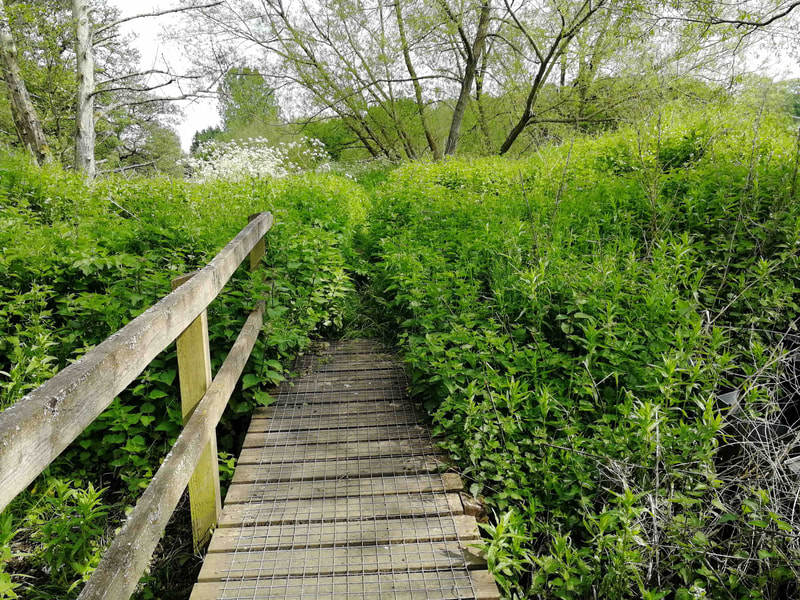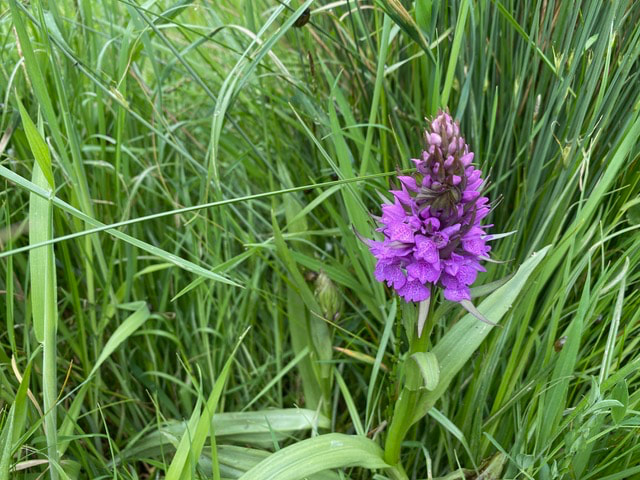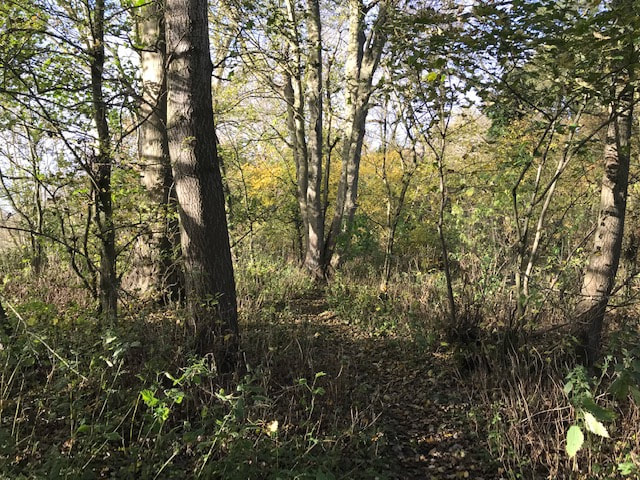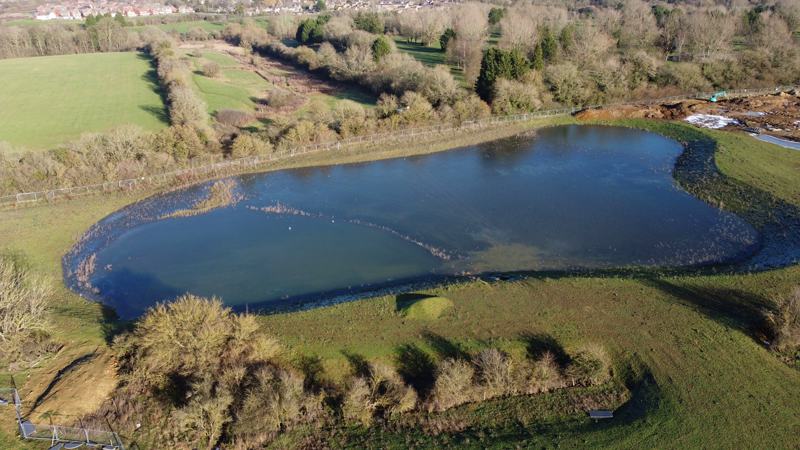TUCKMILL NATURE RESERVE
Tuckmill - also known as Tuckmill Meadows - is an wonderfully diverse 15 acre nature reserve on the outskirts of Shrivenham. It is a Site of Special Scientific Interest (SSSI) for both its calcareous (limestone) fen and its species-rich neutral and calcareous grassland. Tuckmill Stream forms its north-east boundary while, to the west, there are the aspen, ash and sycamore trees of Ratcoombe Copse. Shrivenham Park Golf Club is another neighbour as well as Cross Trees Park, the land of which provides the catchment area for Ratcoombe Brook.
Ratcoombe Brook forms the spine of the whole reserve, flowing into the larger Tuckmill Stream and carrying with it limestone from the reserve’s Coral Rag rock base. There are many springs along the boundary - both sides of the Ratcoombe Brook and the Tuckmill Stream where the limestone merges into the clay-like material.
Tuckmill Stream, from which the nature reserve gets its name, originally meandered across the site. However this was straightened during the 12th century for use in a mill which was part of Tuckmill Farm and sited on the brook's Watchfield bank. The residual meanders of the stream today form the fenland that is a significant part of the reserve.
Tuckmill Stream, from which the nature reserve gets its name, originally meandered across the site. However this was straightened during the 12th century for use in a mill which was part of Tuckmill Farm and sited on the brook's Watchfield bank. The residual meanders of the stream today form the fenland that is a significant part of the reserve.
WINTER 2022-23 ACTIVITY AT TUCKMILL MEADOWS
At the end of the summer there were preparations that needed to be carried out ready for the next year. The orchids had developed their seed pods containing thousands of seeds had scattered. Both west and east patches were scythed to allow the late summer air to wash over the ground.
With the winter came the frosts and friends of Tuckmill (FoT) volunteers used the clear, cold days to scythe the areas around the site in a rotational, chequerboard pattern. The winter also brought the floods and parts of the northern marsh area were underwater. Flooding by Tuckmill Bridge gave a perfect example of why the large stepping stones (see photo below) were put in place hundreds of years ago.
At the end of the summer there were preparations that needed to be carried out ready for the next year. The orchids had developed their seed pods containing thousands of seeds had scattered. Both west and east patches were scythed to allow the late summer air to wash over the ground.
With the winter came the frosts and friends of Tuckmill (FoT) volunteers used the clear, cold days to scythe the areas around the site in a rotational, chequerboard pattern. The winter also brought the floods and parts of the northern marsh area were underwater. Flooding by Tuckmill Bridge gave a perfect example of why the large stepping stones (see photo below) were put in place hundreds of years ago.
The drainage lake at the new Cross Trees development (photo above), at the west end of the reserve, has filled up rapidly with the rains. This has resulted in more water filtering down through the little stream that divides west and east meadows. The dam put in by FoT volunteers showed that it works well by holding the flow of water back, thus slowing it down, and creating pools that can be used by birds and animals. It is planned to put in two more dams, a construction job later this year for the local cub-scout group.
As we go into Spring the next two displays to look forward to are the cowslips that will appear in their hundreds later in March, followed soon after by the marsh marigolds. The ground has been scythed and suitably prepared for the best displays.
Words and photos by Neil B Maw March 2023
As we go into Spring the next two displays to look forward to are the cowslips that will appear in their hundreds later in March, followed soon after by the marsh marigolds. The ground has been scythed and suitably prepared for the best displays.
Words and photos by Neil B Maw March 2023
|
|
email: [email protected]
mail: Friends of Tuckmill, Shrivenham Parish Office, Memorial Hall, Highworth Road, Shrivenham SN6 8BL Copyright Friends of Tuckmill 2021-2023 |





